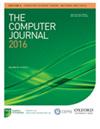提供一种基于可穿戴传感器数据和使用深度学习算法的人类活动跌倒早期预测方法
IF 1.5
4区 计算机科学
Q4 COMPUTER SCIENCE, HARDWARE & ARCHITECTURE
引用次数: 0
摘要
摘要跌倒是主要的健康问题之一,早期发现是非常重要的。这项研究的目的是利用可穿戴传感器数据对即将发生的跌倒进行早期预测。SisFall数据集与两个深度学习模型(CNN和一个名为Conv_Lstm的组合模型)一起使用。同时,提出了一种动态抽样方法,通过提高多数类和少数类样本之间的平衡率来提高模型的准确性。为了实现本文的主要思想,我们提出了一种未来预测策略。然后,通过定义一个时间变量“T”,系统替换并标记下一个T s的状态,而不是只考虑当前状态。这导致在平衡扰动的开始时刻预测落态。实验结果表明,Conv_Lstm模型能够在78%的情况下预测到摔倒,平均在事故发生前340毫秒。灵敏度判据为95.18%。实现了基于中值滤波的后处理模块,可将预测准确率提高到95%。本文章由计算机程序翻译,如有差异,请以英文原文为准。
Providing an Approach for Early Prediction of Fall in Human Activities Based on Wearable Sensor Data and the Use of Deep Learning Algorithms
Abstract Falling is one of the major health concerns, and its early detection is very important. The goal of this study is an early prediction of impending falls using wearable sensors data. The SisFall data set has been used along with two deep learning models (CNN and a combination model named Conv_Lstm). Also, a dynamic sampling method is offered to improve the accuracy of the models by increasing the equilibrium rate between the samples of the majority and minority classes. To fulfill the main idea of this paper, we present a future prediction strategy. Then, by defining a time variable ‘T’, the system replaces and labels the state of the next T s instead of considering the current state only. This leads to predicting falling states at the beginning moments of balance disturbance. The results of the experiments show that the Conv_Lstm model was able to predict the fall in 78% of cases and an average of 340 ms before the accident. Also, for the Sensitivity criterion, a value of 95.18% has been obtained. A post-processing module based on the median filter was implemented, which could increase the accuracy of predictions to 95%.
求助全文
通过发布文献求助,成功后即可免费获取论文全文。
去求助
来源期刊

Computer Journal
工程技术-计算机:软件工程
CiteScore
3.60
自引率
7.10%
发文量
164
审稿时长
4.8 months
期刊介绍:
The Computer Journal is one of the longest-established journals serving all branches of the academic computer science community. It is currently published in four sections.
 求助内容:
求助内容: 应助结果提醒方式:
应助结果提醒方式:


